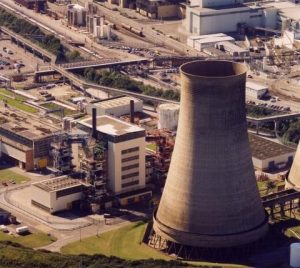http://Iraq’s weapons of mass destruction
http://Iraq and Weapons of Mass Destruction
http://Thinking about Nuclear Power in Post-Saddam Iraq
Iraq has a long-standing weapons program that dealt with the development of weapons of mass destruction was a concerned of the United States and the regional powers of the middle-east. Iraq’s program started around the 1950’s shortly after the 1958 Iraqi coup d’état that took place on 14 July 1958, resulting in the overthrow of the Hashemite monarchy established by King Faisal I in 1921 under the auspices of the British. King Faisal II, Prince ‘Abd al-Ilah, and Prime Minister Nuri al-Said were executed during this coup. This coup laid the ideological foundations of Iraq that were to last until 2003, with Iraq becoming a de facto Arab nationalist and socialist one-party state. Under a nuclear co-operation agreement signed with the Soviet Union in 1959, a nuclear research center, equipped with a research reactor, was built at Tuwaitha, the main Iraqi nuclear research center. The Soviet government sold nuclear technology and expertise to the Iraqis in hopes of gaining more regional influence at the cost of the American lack of support for such a program. By the late 1970’s when Saddam Hussein took power in Iraq, the program was well under way, spurred on by a thriving oil-producing economy.
At this time Iraq had a driving Weapons of Mass destruction program that not just included nuclear proliferation but also chemical, and biological programs. However, by 1980 Iraq invaded Iran and started an 8-year conflict which in turn decimated both nations economies. The war was a by-product of the Iranian revolution.Saddam Hussein was afraid that Iran’s Revolution would start a revolt among Iraq’s long-suppressed Shi’ite majority. Border disputes and the wish of both nations for regional supremacy also contributed to this clash of arms. Iraq’s nuclear program was an effort to cement the Iraqi position as the pre-eminent power in the region.
This status as a dominant middle-eastern power was not just a matter of developing and having nuclear weapons, but also of having the modern civilian applications that go along with such development. There was an emerging Iraqi consensus on the desirability of a peaceful nuclear program, with arguments supported by the expected benefits for electric power generation, agriculture, and medicine, as well as an eventual transition from oil. National pride was also a motivating factor, as nuclear power is viewed as an indicator of modernity and as proof of being able to keep up with regional and international powers.
To conclude, I have found out that the desire of Iraq under Saddam Hussein to develop and possess nuclear technology and capabilities was part of a dream of regional supremacy. The many flaws of the Iraqi government under Saddam Hussein prompted a rapid decline of its nuclear development program. This decline was also accelerated by the Israeli operation that destroyed the Iraqi reactor at Osirak. This site had been bombed by Iranian F-4 Phantom’s just after the outbreak of the Iran-Iraq war of 1979. However, it was the Israeli’s who prevailed and neutralized a potential threat to their national security as they saw it. This emphasis on neutralizing any nuclear capability by other nations proves that Iraq was seen as a clear and present danger to the region. the trend of Dictators of that region has always been to pursue such nuclear capabilities along with other weapons of mass destruction in a process of power aquacition and manipulation of regional strategy.

